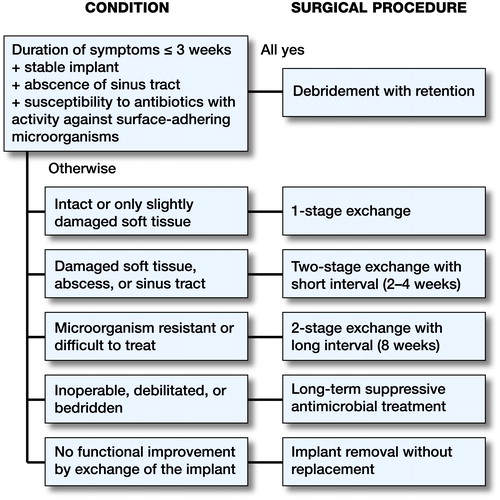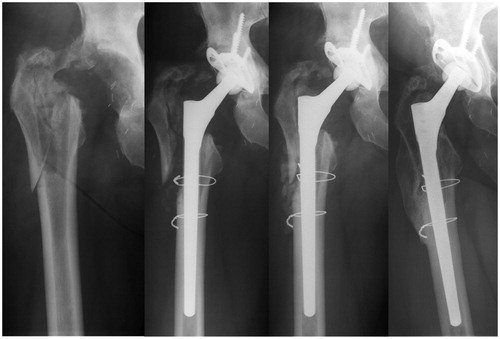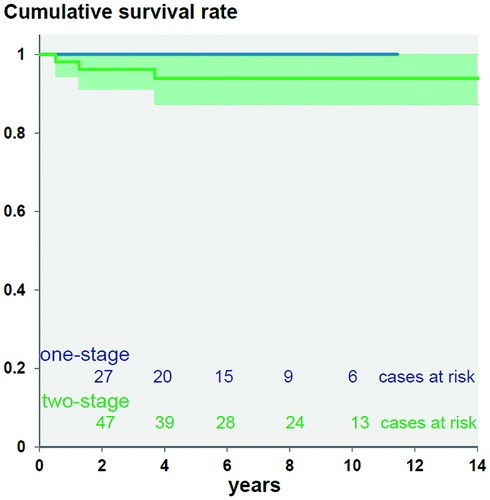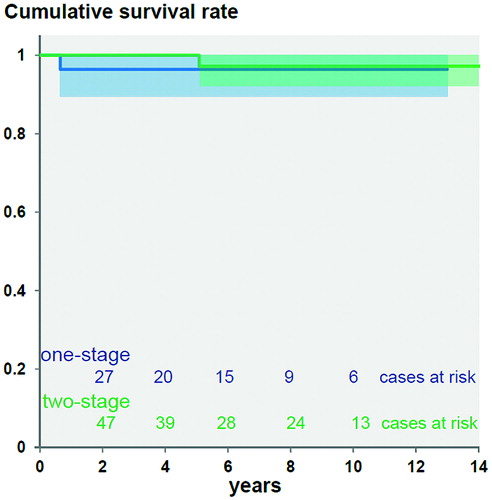Figures & data
Table 1. Etiology of the 81 episodes of PJI. The total number of microorganisms was higher than the number of episodes, because 14 episodes were polymicrobial
Table 2. Distribution of acetabular and femoral defects
Table 3. Summary of the literature concerning 1- and 2-stage cementless revisions in PJI





